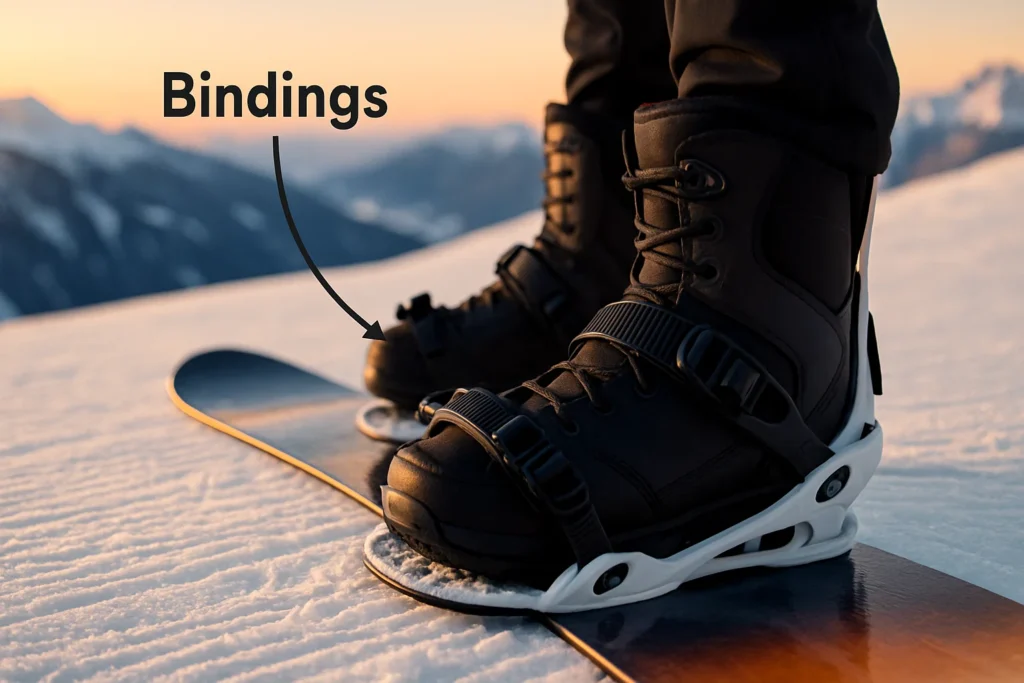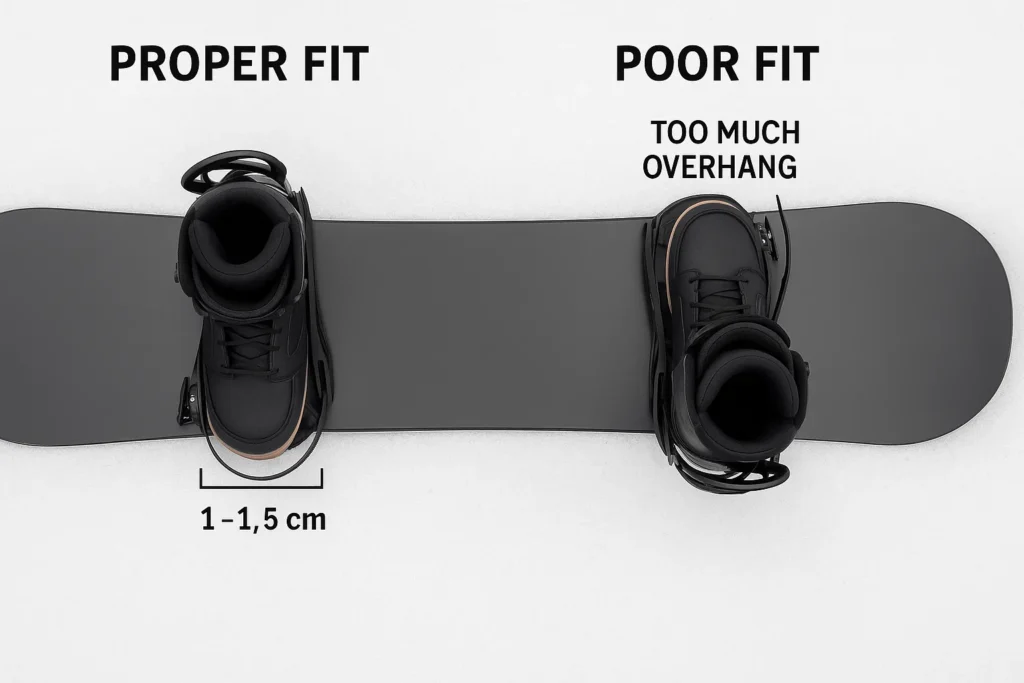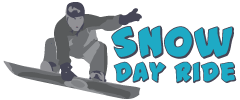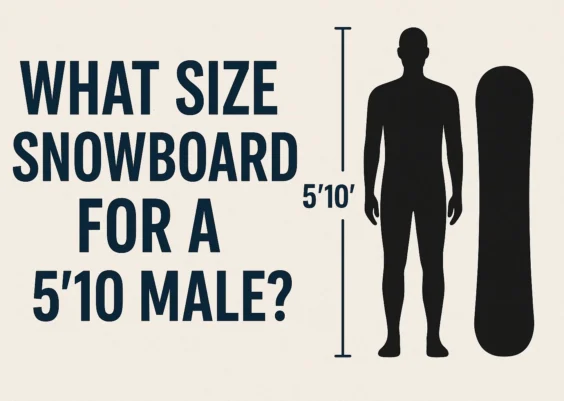Quick Facts
- Binding size depends on your boot size and board width.
- A proper fit improves control, comfort, and safety.
- Sizes differ slightly across brands, so charts matter.
- Correct bindings match your boots, board, and riding style.
What size bindings do I need snowboard is the first question every rider faces after picking boots and a board. The answer sounds simple: your bindings should match the size of your boots. But there’s more to it than just reading a number on a chart. Board width, binding type, and your riding style all play a role.
Choose the wrong size and you’ll feel unstable, lose control, or struggle with foot comfort. The right size, on the other hand, makes every ride smoother. So how do you figure it out without trial and error? Let’s break it down step by step.
Snowboard Binding Components (Quick Breakdown)
Each part of a binding affects how your snowboard feels under your feet. Here’s a clear breakdown with typical flex ratings and durability expectations.
| Component | Function | Flex/Rating (1–10) | Notes & Tips |
|---|---|---|---|
| Baseplate | Connects binding to board, transfers power | 4–10 (soft to stiff) | Stiffer baseplates improve precision; softer ones allow playful flex. |
| Highback | Controls heel-edge response | 3–9 | Taller, stiffer highbacks = better carving; shorter, softer = freestyle freedom. |
| Ankle Strap | Locks boot down, adds comfort | Adjustable | Wider straps = more support; thinner straps = lighter and flexible. |
| Toe Strap | Secures boot front, prevents lift | Adjustable | Cap-style toe straps fit over the boot toe for better hold. |
| Buckles | Ratchets that tighten straps | N/A | Look for smooth release and reinforced aluminum or steel. |
| Cushioning / Footbed | Reduces impact and vibration | Thickness: 2–6 mm | Thicker footbeds absorb landings; thinner ones give stronger board feel. |
Quick Fit Tip
- Beginners should look for medium flex (4–6) in both baseplate and highback.
- Advanced freeriders may prefer 8–10 stiffness for maximum response.
- Freestyle riders usually ride best with 3–5 flex for easier tricks and landings.
What Size Bindings Do I Need Snowboard?
Finding the right binding size isn’t just about matching numbers on a chart. It’s about making sure your boots, board, and bindings work together as one unit.
When they fit properly, you’ll notice smoother turns, better balance, and less strain on your feet. Now, let’s go through the steps that explain exactly how to pick the right snowboard binding size.
Step 1: Understand Snowboard Binding Basics
What Are Snowboard Bindings?
Bindings connect your boots to your board. They transfer your body’s movement into the snowboard, allowing you to turn, carve, and stop. Without the right fit, energy gets lost, and your ride feels unstable.

Why Binding Size Matters
A binding that’s too small squeezes your boots, causing pressure points and discomfort. A binding that’s too large makes your boots slide, reducing control and safety. Correct sizing keeps your foot secure while giving enough freedom to flex naturally.
Tip: Always think of bindings as the “steering wheel” of your snowboard. If the size isn’t right, steering becomes harder and less precise.
Step 2: Match Bindings with Your Snowboard Boots
Boot-to-Binding Compatibility
The first step is to check how your boots fit into the bindings. Your boots should sit snugly without excessive gaps or overhang. If the boot hangs too far over the edges, it can catch in the snow during turns. If it’s too small, your boot will slide inside the binding and reduce stability.
Men’s Snowboard Binding Sizes (by US Boot Size)
| Binding Size | US Men’s Boot Size | EU Boot Size | UK Boot Size |
|---|---|---|---|
| Small | 5 – 7 | 37 – 40 | 4 – 6 |
| Medium | 7 – 10 | 40 – 43 | 6 – 9 |
| Large | 10 – 13 | 43 – 47 | 9 – 12 |
| X-Large | 13+ | 47+ | 12+ |
Women’s Snowboard Binding Sizes (by US Boot Size)
| Binding Size | US Women’s Boot Size | EU Boot Size | UK Boot Size |
|---|---|---|---|
| Small | 4 – 6 | 34 – 36.5 | 2 – 4 |
| Medium | 6 – 9 | 36.5 – 40 | 4 – 7 |
| Large | 9 – 11 | 40 – 43 | 7 – 9 |
Boot Size Conversions
Most brands follow these ranges, but slight differences exist. Always check the specific binding size chart from the brand you choose. If your boot size falls on the edge between two binding sizes, test both if possible. In most cases, it’s safer to size up rather than squeeze into a smaller binding.
Step 3: Match Bindings with Your Snowboard
When asking what size bindings do I need snowboard, it’s not just about boots. Your bindings also need to match the width and mounting system of your board. If they don’t line up correctly, you’ll face stability issues and lose response on turns.
Board Width Considerations
Bindings should sit squarely on your board without boots hanging excessively over the edges. A little overhang (about 1–1.5 cm) is normal, but more than that can cause toe or heel drag when carving. For wide boards, larger bindings usually fit better. For narrow boards, smaller bindings are safer.

Binding to Board Compatibility
Not all boards use the same mounting system. Check which pattern your snowboard has before buying bindings.
- 4×4: The most common square hole pattern, widely supported.
- 2×4: Offers more stance options for fine-tuning.
- 3D: An older triangular system still found on some boards.
- Channel system: A long slot that allows maximum stance adjustability.
Tip: Always confirm that your chosen bindings fit your board’s mounting system before purchase. A mismatch means you can’t set them up at all.
Step 4: Choose the Right Binding Type
Not all bindings are the same. The type you choose affects comfort, ease of use, and how your snowboard responds. Once you know what size bindings do I need snowboard, the next step is deciding which style fits your riding.
Strap Bindings
The most common option. They use ankle and toe straps to lock your boots in place. Riders like them because they are reliable, adjustable, and provide solid control.
Step-On Bindings
These let you click straight into the binding without adjusting straps. They save time, especially in cold weather or on flat terrain. They are easier for beginners but usually cost more.
Rear-Entry Bindings
These open from the back, so you slide your boot in and lock it quickly. They combine the security of straps with easier entry.
Splitboard & Touring Bindings
Designed for backcountry riders. They let you separate your snowboard into skis for climbing uphill, then reconnect for riding down.
Step 5: Factor in Riding Style & Binding Response
When deciding what size bindings do I need snowboard, your riding style is just as important as your boot size. Each style calls for different binding stiffness levels. Stiffness is usually rated on a 1–10 scale, with 1 being very soft and 10 very stiff.
Binding Stiffness by Riding Style
| Riding Style | Stiffness Rating | Best For | Example Use Case |
|---|---|---|---|
| All-Mountain | 4 – 6 | Balanced mix of control and flexibility | Groomers, light powder, mixed terrain |
| Freestyle | 2 – 4 | Easy spins, grabs, forgiving landings | Park jumps, rails, boxes |
| Freeride | 7 – 10 | Maximum response and stability | Steep slopes, deep powder, carving |
Extra Tips
- Beginners learn best with bindings in the 3–5 range, as they are easier to control.
- Advanced riders often push into 7+ stiffness for precision and speed.
- If you ride a mix of terrains, stick with medium flex (4–6) for versatility.
Step 6: Test Fit & Adjust
Even if you’ve chosen the right size on paper, bindings must feel correct when worn. A quick test fit helps avoid mistakes before you hit the slopes.
Trying On & Fitting Your Bindings
- Place your boots inside the bindings. They should sit flush with no large gaps.
- Tighten the straps. They should feel secure but not pinch your feet.
- Check for boot overhang. Around 1–1.5 cm of toe or heel overhang is normal. More than 2 cm risks drag in turns.
Common Fit Mistakes to Avoid
- Too Small: Boots bulge out or feel squeezed, causing pressure points.
- Too Large: Boots slide around, reducing control.
- Loose Straps: Lead to delayed response and unstable landings.
Quick Fit Checklist
| Fit Test | Good Fit | Wrong Fit |
|---|---|---|
| Boot sits flush | ✅ | ❌ Bulging or sliding |
| Strap feels snug | ✅ | ❌ Too tight / too loose |
| Overhang (toe/heel) | 1–1.5 cm | ❌ More than 2 cm |
| Board response | Smooth | ❌ Delayed / unstable |
Tip: Always test bindings with the same socks and boots you’ll ride in. Small differences matter when you’re on snow.
Step 7: Style & Personal Preference
Once you know what size bindings do I need snowboard, the final step comes down to looks and budget. While size and performance should guide your choice first, style and personal comfort add the finishing touch.
Selecting a Color & Design
Bindings come in a wide range of colors and patterns. Many riders match bindings with their board design. This doesn’t change performance but helps create a setup you feel confident riding.
Balancing Budget vs. Performance
- Entry-level bindings ($120–$180): Softer flex, fewer adjustments, good for beginners.
- Mid-range bindings ($180–$250): Better cushioning, stronger materials, versatile for all-mountain use.
- High-end bindings ($250+): Lightweight, highly adjustable, stiffer options for advanced riders.
Tip: Never pick bindings based on color alone. Comfort and fit should always come first.
FAQs
How do I know if my bindings are too small or too big?
If bindings are too small, boots bulge or feel tight. Too big, and boots slide with extra gaps. Both reduce control and comfort, so always test fit before buying.
Can I use men’s bindings with women’s boots?
It depends on size. Women’s boots are narrower, so men’s bindings often feel loose. For best fit and response, use bindings designed for your boot type and foot shape.
Do binding sizes vary across brands?
Yes. Each brand sets its own size ranges. Always check the brand’s official chart instead of guessing by boot size alone. Small differences can affect fit and performance.
What happens if bindings don’t fit properly?
Poorly fitted bindings cause instability, foot pain, and slower response. In the worst cases, they increase fall risk. Correct sizing makes riding smoother, safer, and much more enjoyable.
Choosing what size bindings do I need snowboard goes beyond looking at charts. Think about how you ride, the terrain you prefer, and the comfort you expect. The right bindings should feel like an extension of your boots, not an extra piece of gear. When you find that perfect fit, every turn feels smoother, every jump more controlled, and every run more enjoyable. Take time to pick carefully. It’s one of the smartest moves you can make for your riding experience.




